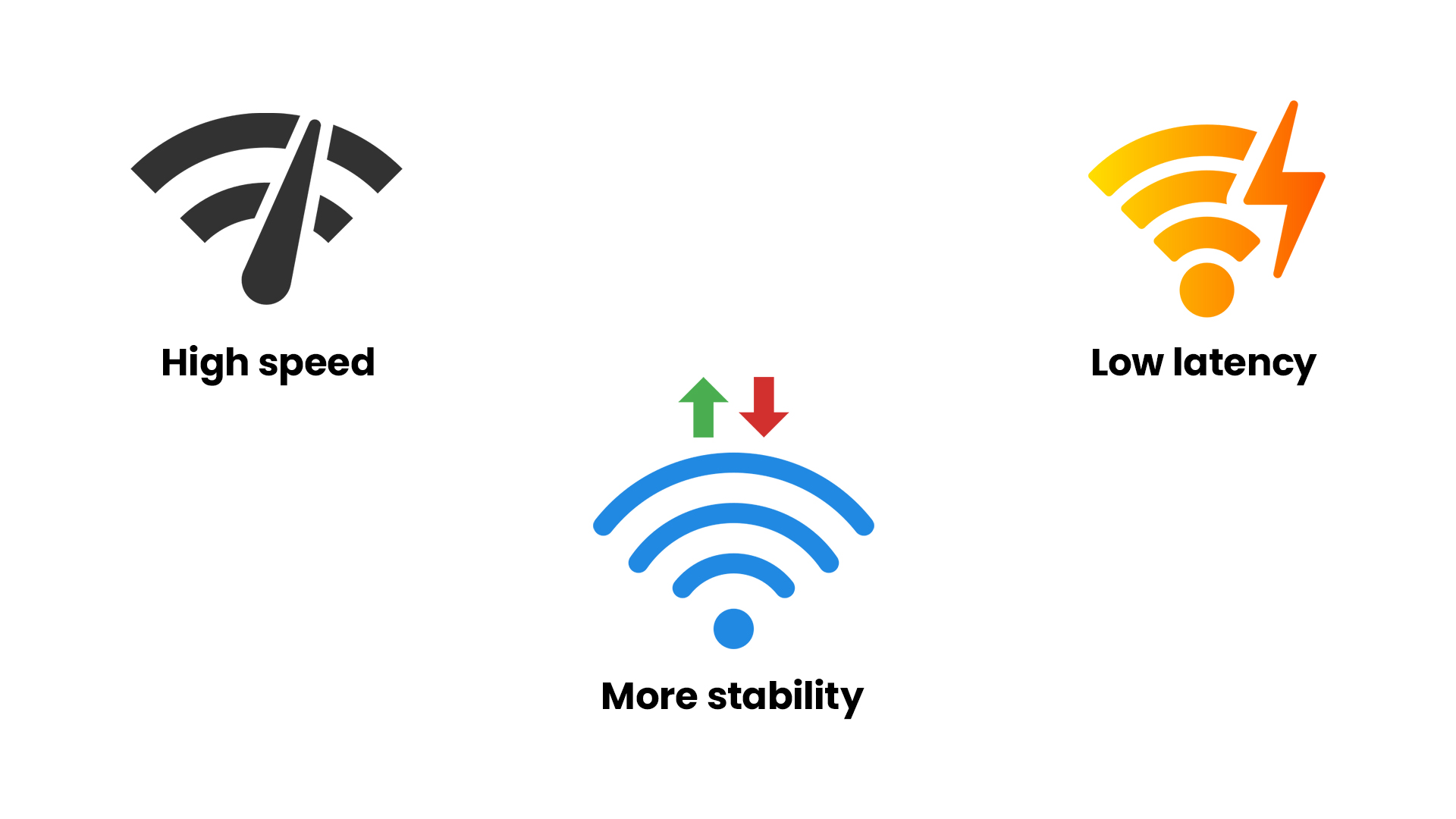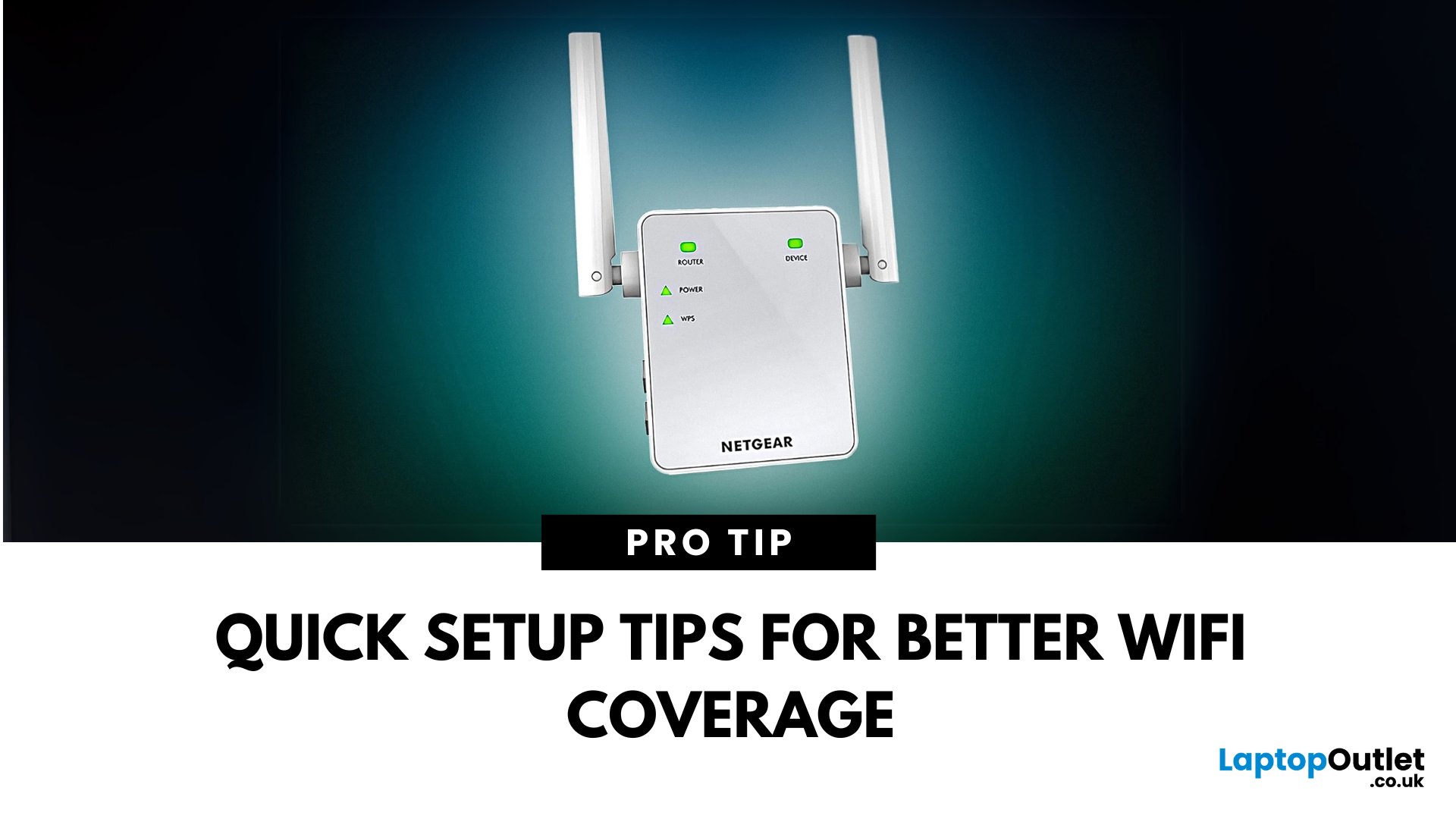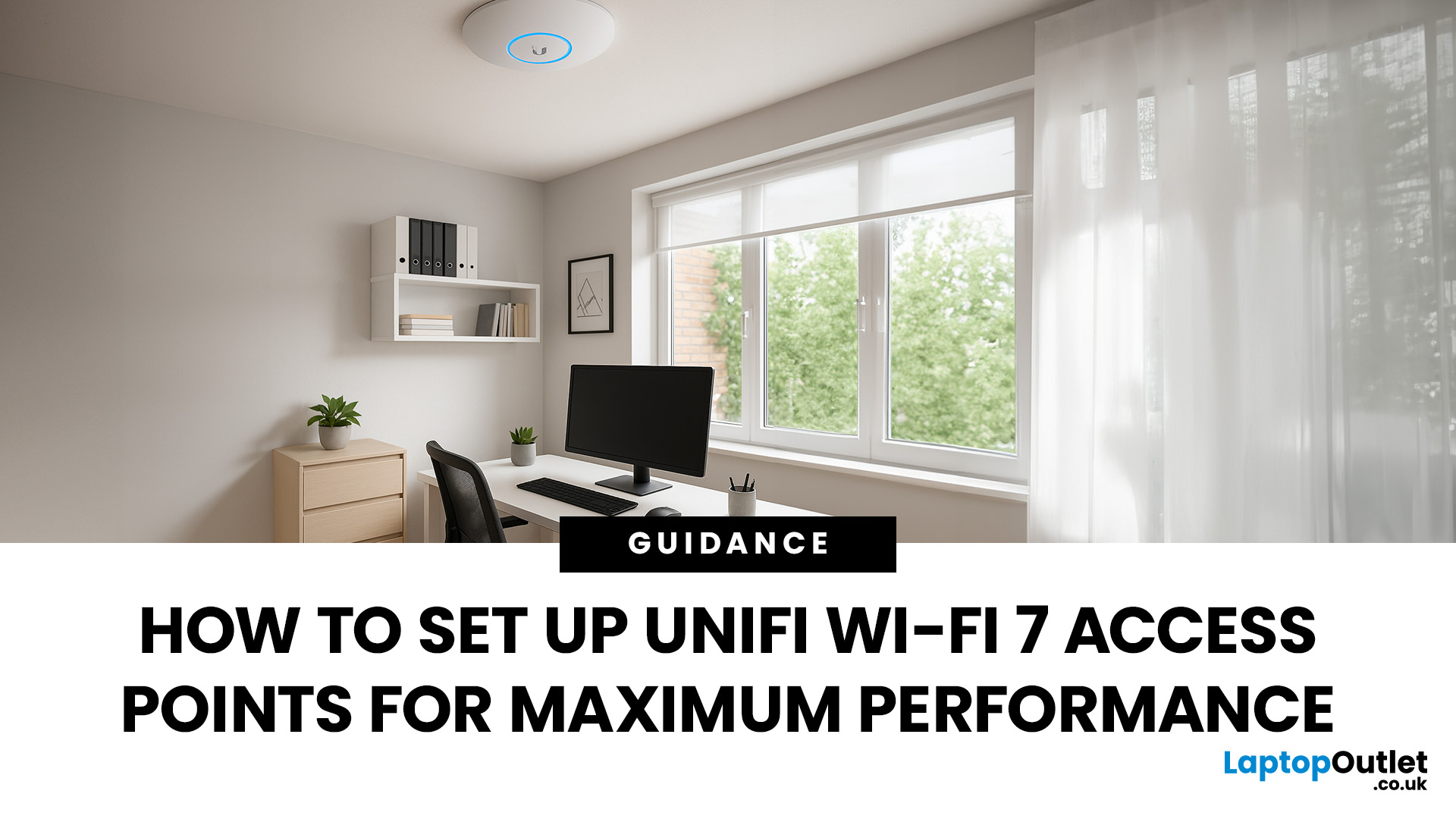Is Wi-Fi 7 Worth It in 2025? Pros, Cons, and When to Upgrade

Every few years, Wi-Fi takes a leap forward - and with it, our entire online experience changes. We saw it with Wi-Fi 5, which brought gigabit speeds to homes, and then again with Wi-Fi 6, which improved reliability in device-packed households. Wi-Fi 6E nudged things further by opening up the 6GHz spectrum. Now we’ve arrived at the next big question: is Wi-Fi 7 worth it in 2025?
Wi-Fi 7 (also known as IEEE 802.11be) promises a trio of improvements: faster speeds, lower latency, and better stability. On paper, it looks like the ultimate upgrade. But real life isn’t just about headline speeds - it’s about whether you’ll notice the difference in your day-to-day use, and whether the cost of new routers and devices makes sense right now.
In this guide, we’ll weigh up the pros and cons, compare Wi-Fi 7 against Wi-Fi 6 and 6E, and answer the golden question: should you upgrade now, or wait a little longer?
What Is Wi-Fi 7? Quick Recap
Before we dive into the debate, let’s quickly answer: what is Wi-Fi 7?
Wi-Fi 7 is the newest wireless networking standard, officially called IEEE 802.11be Extremely High Throughput (EHT). As the name suggests, it’s built to massively increase data capacity, reduce lag, and keep networks stable even as we pile on more devices.
Key Improvements at a Glance
Faster Speeds – Theoretical maximums of up to 46 Gbps, compared with 9.6 Gbps on Wi-Fi 6.
Lower Latency – Reduced delays for gaming, VR, and video calls.
Better Stability – Thanks to features like Multi-Link Operation (MLO), which lets devices use multiple bands (2.4GHz, 5GHz, 6GHz) at once.
Smarter Spectrum Use – Through techniques like preamble puncturing, which avoids wasted frequencies.
High-end Wi‑Fi 7 routers like the ASUS ROG Rapture GT‑BE98 offer up to 25 Gbps speeds and quad-band connectivity, showing what’s possible with next-gen networking.
Why It Matters in 2025
We’re living in a time of data-heavy habits: 4K/8K streaming, cloud gaming, remote working, VR/AR experiences, and homes crammed with smart devices. Wi-Fi 7 is designed to be the network backbone that can handle it all.
In simple terms: Wi-Fi 7 is not just “faster Wi-Fi” - it’s smarter Wi-Fi that adapts better to modern demands. To understand how routers work and what features to look for, see What Is a Router?.
The Pros of Wi-Fi 7

Wi-Fi 7 has plenty going for it, and for some users, it’ll feel like a must-have right now. Let’s look at the advantages.
1. Faster Speeds
Wi-Fi 7 delivers theoretical speeds of up to 46 Gbps. Even if you’ll never see the maximum at home, it translates into much snappier performance - downloading massive files, streaming ultra-HD content, or transferring projects across a local network.
2. Lower Latency
Thanks to Multi-Link Operation and smarter scheduling, latency is cut to near zero. For gamers, that means lag-free online play. For professionals, smoother video calls without awkward delays.
3. Greater Stability
With MLO using multiple bands at once, your connection becomes far less prone to drops or congestion. Even in busy households, Wi-Fi 7 keeps everything humming along.
4. Future-Proofing
Investing now means your router and devices will be ready for the next 5–7 years of Wi-Fi evolution. As ISPs roll out faster fibre speeds, you’ll already be set up to take advantage.
5. Ideal for Heavy Users
Large families, hybrid workers, streamers, and smart home enthusiasts will notice immediate improvements in day-to-day use.
Bottom line: Wi-Fi 7’s pros are impressive, especially if you push your home or office network to its limits. If you already have a high-performance mesh setup like the Netgear Orbi RBK763S, upgrading to Wi‑Fi 7 may not offer immediate practical benefits.
The Cons of Wi-Fi 7

Of course, every shiny new tech comes with caveats - and Wi-Fi 7 is no different.
1. The Cost
Early Wi-Fi 7 routers are expensive, often £400–£600. Add in the fact that only premium laptops and smartphones support it right now, and the entry price is steep.
2. Limited ISP Speeds
Most broadband packages in the UK max out at 1–2 Gbps, far below Wi-Fi 7’s capabilities. Unless you’re lucky enough to have multi-gigabit fibre, you won’t fully utilise the speed potential.
3. Device Compatibility
You’ll need new devices with Wi-Fi 7 chips to unlock its features. Older gadgets will still connect, but they’ll only run on Wi-Fi 6 or Wi-Fi 5 speeds.
4. Early Adoption Risks
As with all first-gen tech, early adopters may face bugs, firmware issues, or limited support. Prices will also fall significantly over the next couple of years.
In short: Wi-Fi 7 is brilliant, but pricey and ahead of what most people’s broadband and devices can handle today.
If you want a clearer foundation, check What Are Networks - it explains how networks like LAN, WLAN, and routers interconnect.
Wi-Fi 7 vs Wi-Fi 6 and 6E
So, is Wi-Fi 7 truly a big leap, or just an incremental update? Let’s compare.
Speed
- Wi-Fi 6: Up to 9.6 Gbps.
- Wi-Fi 6E: Same speeds, but with a new 6GHz band.
- Wi-Fi 7: Up to 46 Gbps.
Latency
- Wi-Fi 6: Better than Wi-Fi 5, but still noticeable for gamers.
- Wi-Fi 7: Near-zero latency thanks to MLO.
Channel Widths
- Wi-Fi 6: 160 MHz.
- Wi-Fi 7: 320 MHz — double the capacity.
QAM
- Wi-Fi 6: 1024-QAM.
- Wi-Fi 7: 4096-QAM, cramming more data into each signal.
Who Benefits Most
- Wi-Fi 5 users: The upgrade will feel massive.
- Wi-Fi 6 users: Noticeable improvements if you’ve got lots of devices.
- Wi-Fi 6E users: Gains are smaller, but still worth it for gamers and power users.
Verdict: Wi-Fi 7 isn’t just incremental — it’s the biggest generational leap since Wi-Fi 5. Routers like the TP-Link Archer AX73 (AX5400) already deliver exceptional Wi‑Fi 6 speeds - more than enough for most users today.
When Is the Right Time to Upgrade?
Here’s the tricky bit: timing. Should you jump in now, or wait a year or two?
Upgrade Now If:
- You’re a gamer chasing lower latency.
- You’re a content creator moving huge files daily.
- You’ve got a smart home crammed with IoT devices.
- You want to future-proof your setup for the next 5+ years.
Wait If:
- Your Wi-Fi 6 router works just fine.
- You’re not on multi-gigabit broadband.
- Most of your devices don’t yet support Wi-Fi 7.
- You’d rather save money and wait for prices to drop.
The Realistic Timeline
By 2026–2027, Wi-Fi 7 will be mainstream, with affordable routers and most devices supporting it by default. Unless you have a burning need today, holding off could save you cash without much compromise. Mesh systems like the ASUS ZenWiFi XD5 offer strong performance in device-heavy homes - a great interim solution before Wi‑Fi 7 becomes mainstream.
Answer: For power users, Wi-Fi 7 is worth it now. For everyone else, waiting makes sense.

Wi-Fi 7 in 2025, Answered
Do I need a new router for Wi-Fi 7?
Yes. To enjoy Wi-Fi 7’s benefits, you’ll need a compatible router and devices. Older laptops and phones will still connect, but they’ll run at Wi-Fi 6 or 5 speeds.
Is Wi-Fi 7 worth it for gaming?
Definitely. Wi-Fi 7’s lower latency and stability make it perfect for online multiplayer, cloud gaming, and VR experiences where every millisecond counts.
How long until Wi-Fi 7 becomes mainstream?
Expect Wi-Fi 7 to be widely adopted by 2026–2027. By then, most new phones, laptops, and affordable routers will include it as standard.
Will my old devices work with Wi-Fi 7?
Yes. Wi-Fi 7 is backwards compatible, so your older gadgets will still connect - they just won’t take advantage of the new speed and latency improvements.
Is Wi-Fi 7 faster than Ethernet?
In raw numbers, yes - Wi-Fi 7 can outpace standard Ethernet cables. But Ethernet is still the most stable, consistent option. Wi-Fi 7 brings wireless closer than ever to wired performance.

Should You Upgrade or Wait?
So, is Wi-Fi 7 worth it in 2025? The short answer: it depends what your needs are.
If you’re a gamer chasing every millisecond of latency, a creative pro transferring terabytes of data, or someone running a smart home with dozens of connected devices, then yes — Wi-Fi 7 can make a noticeable difference today. Its faster speeds, lower latency, and better stability are real benefits in demanding environments.
But for the majority of households, Wi-Fi 6 (and Wi-Fi 6E) are still more than capable. Most broadband packages in the UK don’t yet deliver speeds that make Wi-Fi 7 feel essential, and early hardware comes at a premium. Waiting until 2026 or 2027, when the technology matures and prices drop, will make sense for most people.
In other words, Wi-Fi 7 is the future of wireless networking - but whether it’s worth it right now depends on how you use the internet.
| Read More: |
| How to Connect Netgear WiFi Extender |
| How to Boost WiFi Signal |
| How to Set Up UniFi WiFi 7 Access Points for Maximum Performance |
Related Articles

May 30, 2025
If you're tired of weak WiFi in certain corners of your home or office, a Netgear WiFi Extender might be your ideal solution. But if you're wondering how to connect a Netgear WiFi extender quickly and correctly, you've come to the right place.
Whether you're using WPS, a web browser, or the Nighthawk app, this step-by-step guide will help you set up your Netgear Extender without the tech stress and ensure a stronger signal wherever you need it most.
Why Use a Netgear WiFi Extender?
We've all been there. You're halfway through a Netflix series, and just as the plot thickens, the WiFi gives up. Or maybe you're trying to take a video call from the kitchen, and suddenly you're frozen mid-sentence. If your home has patchy signal areas, often referred to as dead zones, it's not your fault. It's just how most Netgear routers and other routers work.
A Netgear WiFi Extender gives your internet a second wind. Instead of relying on one central router to do all the heavy lifting, an extender

June 02, 2025
Say Goodbye to Dead Zones
Weak WiFi can turn streaming, gaming, or even browsing into a nightmare. If you're tired of buffering and connection drops, it’s time to improve your signal. Here’s how to boost your WiFi signal and keep your connection stable.
1. Reposition Your Router
- Place it in a central, elevated location (not in a cupboard)
- Avoid placing it near walls, metal objects, or appliances
- Keep antennas upright for optimal coverage
Walls, mirrors, and microwaves can block or reflect signal
2. Update Router Firmware
- Log into your router settings
- Check for firmware updates and install if available
- Some routers update automatically, others need manual action
3. Change WiFi Channel
- Use router settings to switch to a less crowded channel
- Especially useful in flats or busy buildings
- Apps like WiFi Analyzer (Android) can help find the best channel
4. Upgrade Your Router or Antenna
- Older routers = slower speeds and weaker signal
- Consider a dual-band or WiFi

September 22, 2025
If you’ve just got your hands on the latest UniFi WiFi 7 access points, you’ll want to ensure you’re squeezing out every bit of performance they can offer. WiFi 7 promises faster speeds, lower latency, and smoother connectivity, but those benefits only appear when the setup is done properly.
This guide is for anyone planning their UniFi WiFi 7 Access Point Setup. Whether you’re installing them at home, in an office, or across a larger site, we’ll walk through everything step-by-step: adoption in the UniFi Controller, WiFi 7 access point configuration, 6 GHz band setup, and making the most of Multi-Link Operation.
Step 1: Prepare Your Space
Before you even plug anything in, take a moment to prepare. A little planning saves a lot of fixing later.
Do a quick site survey
Walk around with a phone or laptop and check for dead WiFi zones. Look for thick concrete walls, metal surfaces, or areas where you’ve always struggled with signal.
Plan where to mount
The golden rule is high and central.
